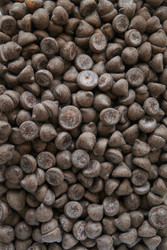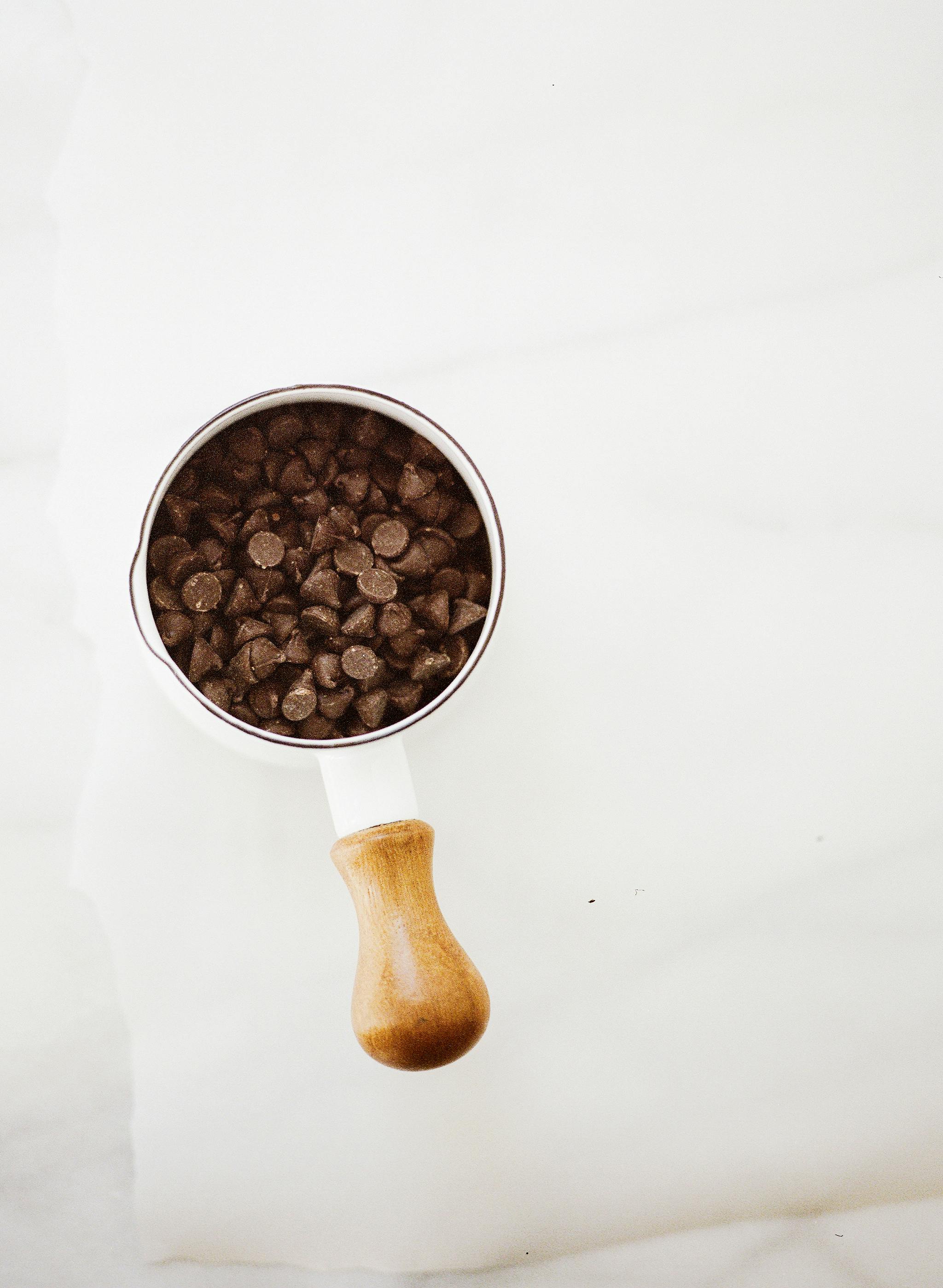Differences Between Chocolate Compound And Real Chocolate
Aug 3rd 2022
Sometimes called compound or confectionary chocolate, these have a substancial difference with real chocolate.
Chocolates are treats enjoyed by numerous people all over the world. Chocolate comes in many different forms and sizes. However, there is such thing as fake chocolate. What is the difference between the two?
Real chocolate is made with cocoa, cocoa butter, sugar, and other ingredients. However, compound chocolates (also known as confectionary chocolate) are made with other vegetable fat instead of cocoa butter.
Vegetable fat like coconut oil and palm kernel oil costs less than cocoa butter. Hence, many chocolate manufacturers prefer producing compound chocolates to reduce their cost of production. However, what differences are there between the texture and taste of compound and real chocolate? What other aspects are affected by this?
Why Are Real And Compound Chocolates Different?
Real chocolate made with cocoa butter has a melt-in-your-mouth feature as cocoa butter melts at body temperature. So as soon as real chocolate enters your mouth, it melts straight away and releases an outburst of flavor. The melting effect also elevates the chocolate-eating experience of the consumer.
Compound chocolate also melts in the mouth, but it takes longer than real chocolate and doesn’t have the same effect. Real cocoa butter has a very quick curve of solids vs. temperature, which melts incredibly fast at around 37 C ( 98.6 F). The crystals formed by the tempered cocoa butter start breaking rapidly with the warmth in the mouth, creating a luscious sensation in one's mouth.
Both real and compound chocolates come in varying cacao percentages. They can be white or dark chocolate, depending on their cacao concentration. However, the texture, taste, and fragrance of real and compound chocolates differ. Cocoa butter smells and tastes like cacao, and that is a unique aroma and flavor that cannot be replaced with other vegetable oils. This aroma and flavor ad, of course, partoft the flavor profile of the chocolate. Compound chocolate only gets its chocolate flavor from bulk cocoa powder, missing depth, and aroma in the chocolate.
When making compound chocolates, two of the main ingredients of real chocolate are replaced by substitutes. In compound chocolates, cocoa butter is replaced with vegetable oil. It could be coconut oil or palm kernel oil. Also, chocolate liquor is replaced by cocoa powder. This causes a slight deviation in the taste of the two chocolates.
Real chocolate, like most made by craft chocolate makers, is made with cocoa butter and chocolate liquor. However, when using these two ingredients, the chocolate has to be tempered properly with enough care and skill to create a crystallization of the butter that will make the chocolate shiny and with the characteristic clear snap of a chocolate bar.
Since real chocolate requires tempering, more time and effort will be needed to create a good-looking chocolate bar. Hence, most commercial and low-value candy manufacturers prefer not to use real chocolates for their products. If the chocolate is not tempered correctly, a fat bloom might occur, messing up the look of the chocolate. Unlike artisan chocolate makers, most mass-producing chocolate companies use cocoa substitutes to replace ingredients to manage production costs.
Compound chocolates being more flexible in the manufacturing process and versatile, are more suitable when it comes to baking such as chocolate chips or coating such as ice cream crusts. Some of them use different vegetable oils with a higher or lower melting point, so that it doesn’t melt so easily when baking or so that it doesn’t become too hard and brittle when frozen.
Why the different ingredients for chocolate making matter : craft chocolate bars vs. couverture and chocolate compound / confectionery chocolate
-
Composition
Composition plays a significant role in differentiating between real and compound chocolates. The ingredients used for the two chocolates are similar but different. Real chocolate is made using cacao butter and cacao mass (also called cacao liquor, cacao paste or unsweetened chocolate) as the main ingredients. However, compound chocolates are made using vegetable fat and cocoa powder.
Compound chocolates also make use of cocoa substitutes, replacers, and extenders which might contain a certain amount of cocoa butter. However, the percentage concentration does not meet the required amount of 18% cocoa butter to be considered real chocolate under the legal definition.
Couverture chocolate is real chocolate but usually has a higher percentage of cocoa butter. Couverture chocolate contains a minimum of 31% cocoa butter, almost double that of the legal definition of real chocolate. Real chocolates can also contain vegetable fat but only as much as 5%. Compound chocolates, however, can be made from a combination of vegetable fats.
-
Taste and Texture
Real and compound chocolates have different cocoa butter and sugar content. This causes a variation in their taste. The melting effect of cocoa butter not only gives a nice sensation it also boosts the flavor and fragrance of the chocolate. This separates real chocolate from compounds.
Compound chocolate tends to have more sugar in it. This might give it an extra sweet effect, but it also reduces the effect of the chocolate flavor. Cocoa liquor used to make real chocolates have various tastes based on origin, the roasting of the cocoa nibs, and the conching of the cocoa paste. Compound chocolates do not contain this cocoa mass and hence have a reduced effect when it comes to taste because its only flavor comes from the cocoa powder.
When it comes to texture, cocoa butter provides a rich and smooth texture when used to make real chocolates. Unlike real chocolate, which melts once it enters the mouth due to its unique crystalization and rapid melting curve at the human body’s temperature, compound chocolates take more time or require chewing before it melts quicker, but it also leaves a waxy feeling on the tongue.
-
Handling And Characteristics
Real chocolate and compound chocolate exhibit different characteristics. Real chocolate contains cocoa butter and does not melt easily at room temperature but dissolves when it enters the mouth. Real chocolates have a glossy look and have a snapping effect when broken.
For compound chocolates, the fat used in manufacturing determines its texture and melting point. By changing the vegetable fat used in the manufacturing process, companies can get different effects on their products. This makes it easier for mass production, storage, and distribution, as the compound can be manufactured to the desired melting point without the concern of blooming.
Real chocolate must not only go through a tempering process to have a nice glossy appearance but must be also stored under proper conditions to keep its beautiful shine.
-
Sustainability and Ethical Trade
Craft and artisanal chocolate makers, bakeries, brewers, and chocolatiers tend to carry products representing their values. This includes sourcing cacao beans and products from sustainable origins with transparent pricing and environmental responsibility. Vegetable oils such as palm kernel oil are known to cause deforestation and take away the habitat of Orangutans and many other wild animals, pushing them to extinction and contributing to climate change.
-
Health and Nutrition
As mentioned, the cocoa butter replacers, substitutes, and extenders in chocolate compound are made with other vegetable oils. However, because they need to emulate the physical behavior of real cocoa butter, they must be chemically modified. For that, chemical processes such as hydrogenation or interesterifications are used, which saturate the oil molecules. The real problem is that these saturated fats are the worst fats for the human body, which can create heart disease, among many other health problems. On the other hand, natural cacao butter is among the healthiest fats comparable to olive and avocado oil.
Conclusion
Although compound chocolate may be easier to use and deliver, the advantages of using only real cocoa butter to make bean-to-bar chocolates or any other chocolate couverture outweigh this. Not only is it better for the environment, but also has a better flavor profile, gives a much more pleasant mouthfeel, and is much healthier for the consumer. So next time you are looking for what chocolate to use in your chocolate beverages, cakes, ice creams, or desserts, always look for real chocolate. The whole world, including your customers, will appreciate it for sure!


